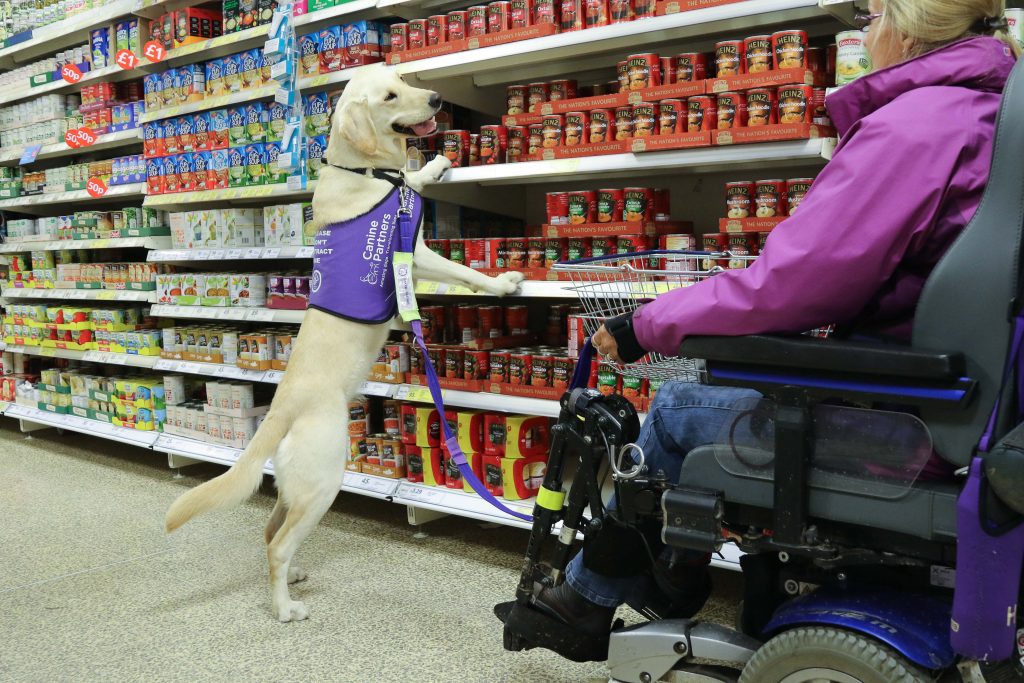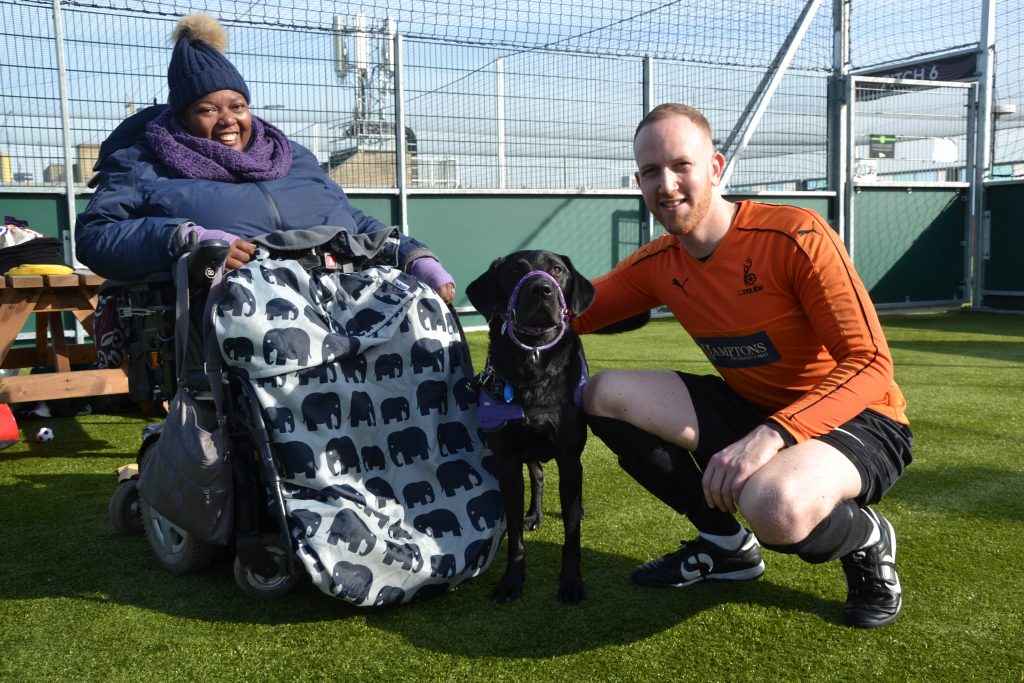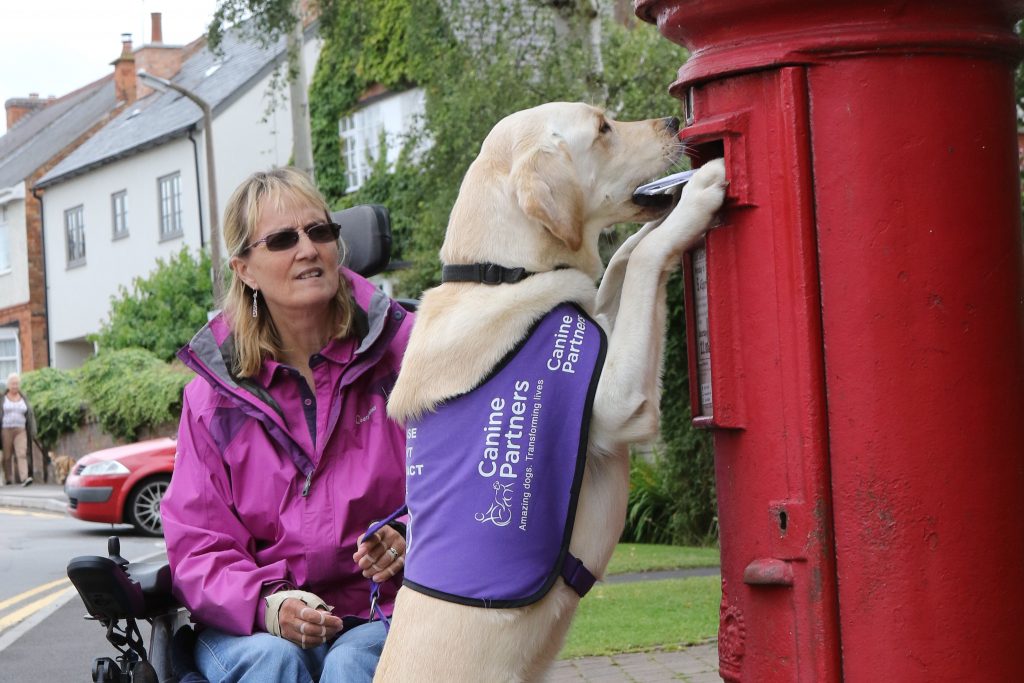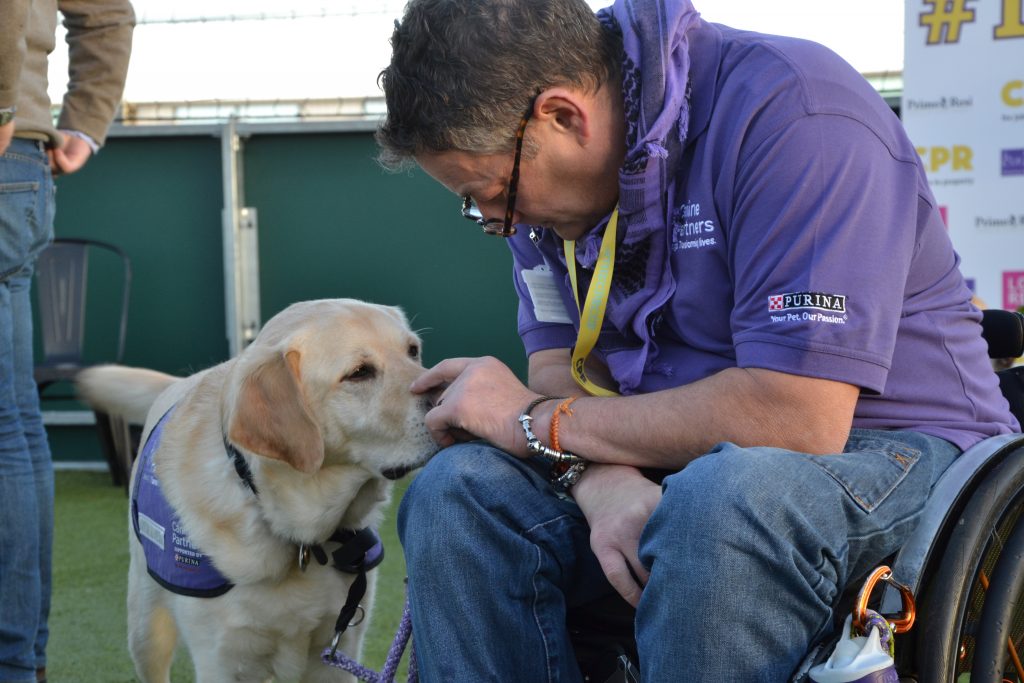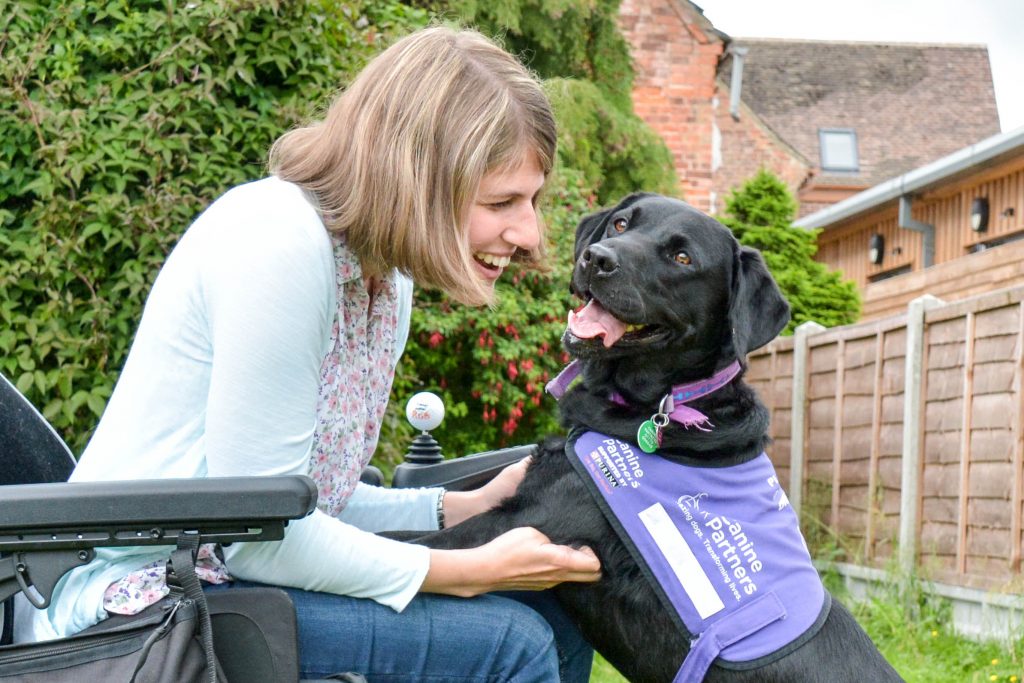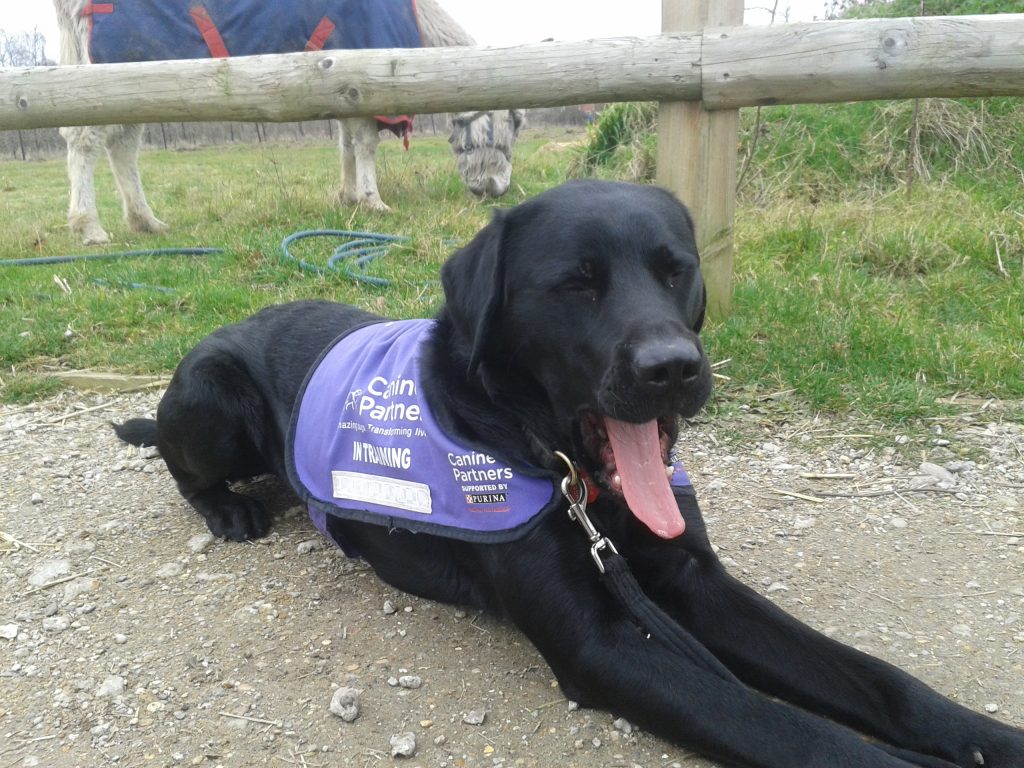Tip Tuesday: How to approach Assistance Dogs
Posted 5 years ago
Here in the UK, we are a nation of pet lovers, which makes it particularly exciting when we see an Assistance Dog out and about.
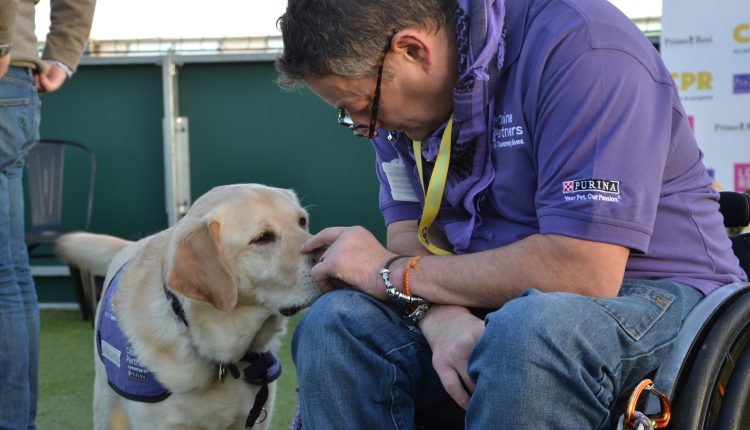
Here in the UK, we are a nation of pet lovers. It is estimated that 26% of households own a pet dog- which adds up to 9,000,000 dogs in the UK. The figures speak for themselves; we truly love our animals, which makes it particularly exciting when we see an Assistance Dog out and about.
Perhaps it’s the novelty of seeing a dog in a public place such as a supermarket or library, or perhaps it’s because they look so smart in their service jackets; the truth is it seems we are drawn to Assistance Dogs all the more.
It’s absolutely fascinating to watch them hard at work and they carry themselves with such poise as they go about their daily tasks that it’s so easy to be tempted to rush up to them and give them a good fuss. Often we justify this by the fact that we “just love animals” and we can’t keep ourselves away, or, the dogs will really enjoy the attention. However, these dogs hold so much appeal and are able to do so many remarkable tasks because they have been highly trained to work in such a range of environments.
But just like you or me when we are working, these dogs can be distracted from doing their highly important tasks. It’s important to remember that a dog of any age might be working or training to become an Assistance Dog. By distracting the dog you may be preventing him from focussing and reducing his ability to follow commands or even putting his handler in danger. So remember these tips before rushing up to any dog working with a handler, no matter how cute!
Here are a few handy hints and tips
How to avoid distracting a dog at work
A dog and his handler work as a partnership (a human and canine partner). So if you need to approach the dog for any reason, then always speak to the person first, don’t go straight in talking to or touching the dog. If the dog pulls out to greet people that are distracting him, it could cause injury or unbalance their handler if allowed to do so.
If you see an Assistance Dog and his human out and about, they are most likely working. Automatically approaching the dog first, by either speaking to him or touching him, may distract the dog from doing his job at that moment in time and take away his attention from his human partner. It may not be every day that you see a dog reaching for a can of beans off the shelf at your local supermarket or paying at the till, but remember the dog may be keeping his partner safe.
Petting the dog
A big temptation (potentially the biggest) may be to show the dog how gorgeous you think he is by giving him a good old fuss- petting him and reaching out to touch him; after all your pet dog at home may love this.
If you really feel the need to pet the dog always ask his human partner first. Respect the person’s decision to allow you to touch the dog or not.
By reaching out to touch him or distracting him with unexpected movements you may be stopping the dog from carrying out his task for his human partner and it’s not good to encourage the dog to pull out to greet people. His focus may be entirely on carrying out the task at hand or listening to his human partner; however this could easily be interrupted by you giving him a sneaky stroke!
If the partnership is not in the middle of doing a task and the time is right, the human partner may give you permission to fuss the dog, but remember always listen to the human partners directions. Some dogs may even have the will power or may have been trained to not respond to outside influences, so don’t be offended by this. This means that they are totally focused on their partner and they truly have a strong partnership. It is only after the human partner gives them permission to greet you that interaction may occur.
Food
Another crucial thing about approaching an Assistance Dog, is not to offer them food. This may be the BIGGEST temptation for the dog and the hardest thing to ignore. At Canine Partners, most of the dogs are food motivated and their training is carried out by positive reinforcement with food often as their reward. Offering an Assistance Dog food is another way the dog may be distracted from his task or focus on his human partner. In fact, in a partnership, rewards in the form of treats should always come from the human partner in order to build up the strength of the partnership. By offering food from an outside source, the partnership may be weakened as their human won’t be the sole focus of attention. The dog will also be encouraged to pull out to people, which will be difficult for the partner to manage, or could lead to unbalance or cause injury to the handler.
In addition, the dog itself may have allergies or intolerances and will probably be on a strict diet where his meals are balanced with his treats for the tasks he does. Not only do our Assistance Dogs do incredible things, they also need to be in great health and at a good weight, in order to carry out their tasks safely and look all the more gorgeous in their smart jackets!
Other pets
Another distraction for an Assistance Dog may be by interaction with another animal. Perhaps you have your pet dog with you and you can think of nothing nicer than having a friendly meet and greet between the two? But just like before, this is another distraction for the Assistance Dog.
Always ask the human partner if it’s ok to introduce another animal. And always respect their answer. In the worst case scenario, the interaction may have negative consequences, which may affect the ability of the Assistance Dog to do his work and ultimately keep his human partner safe.
Other things to know when approaching an Assistance Dog
Each partnership between canine and human will have specific ways of working and will have found their own methods to getting things done. The general rule of thumb is to avoid interfering in a partnership and let them do their thing; you may be amazed by what they can achieve on their own! Have you ever seen a four legged friend post a letter?
However, if you are concerned that a partnership needs help always asks the human partner if you can be of assistance. Interfering in a task, perhaps by grabbing the dog’s lead or the human partner’s wheelchair for example, could cause confusion or a great deal of upset. If the human partner doesn’t require your help, please don’t be offended. The unique canine partnership has their own, very special ways of doing things and may have very good reasons for avoiding assistance.
Be respectful
Taking this one step further, a key thing to remember when approaching a canine partnership is to show sensitivity and appropriate respect to both human and dog. You may well be fascinated by the amazing tasks the dog can do and the special bond between human and canine. This may lead to further questions about how the partnership came about and why. While some partners may be happy to discuss their circumstances, it’s best practice not to ask personal questions about the human partner’s disability, personal life or any other private matters. Please show courtesy and respect and avoid making the partner feel uncomfortable or like their privacy has been intruded.
The dog’s welfare is a priority
Another important thing to keep in mind is that both the human partner and the charity the partnership was formed by (e.g. Canine Partners) has the dog’s best interest at heart and at all times. Assistance Dogs have to do a wide range of challenging tasks and this is well understood by their human partners. Consequently, the dogs get plenty of time to rest, play and have time off lead. No one appreciates an Assistance Dog more than their human partner who will always want the best for their dog. So don’t worry that an Assistance Dog isn’t having fun or getting to be a dog, chances are they are the centre of attention at home and have many play sessions! Plus the dogs have the benefit of being with their partner almost all the time, which, as man’s best friend, they simply love to do!
Patience is a skill
If you spot an Assistance Dog sitting quietly or maybe napping, avoid the assumption that they aren’t working. It may be that their human partner has just settled them down to lie or sit nicely while they are busy doing something else. Being patient and settling nicely is a skill in itself and if a dog is distracted from this state it can be hard and energy-zapping for the partner to re-settle the dog. It’s only natural that if the human partner is stationary for any period of time, that their canine partner would lie down and appear to have a doze. This may be the case, but remember- the relationship between canine and human partner is so strong that the dog will be ready to assist their human at the slightest sign of aid being required.
What if the Assistance Dog approaches you first?
Finally, remember if for some reason an Assistance Dog does approach you, check with their human partner quickly. It may be that the dog has just been distracted by the smell of something yummy in your pocket and if this is the case, the human partner will be grateful to you for ignoring the dog and will refocus his attention.
However, some Assistance Dogs are trained to seek help from other humans in case of emergency, so, once again, check with the human partner to see if assistance is required. If an Assistance Dog appears separated from their partner look around for their human and follow the dog back to the human. This skill is another way our amazing Assistance Dogs keep their humans safe!
